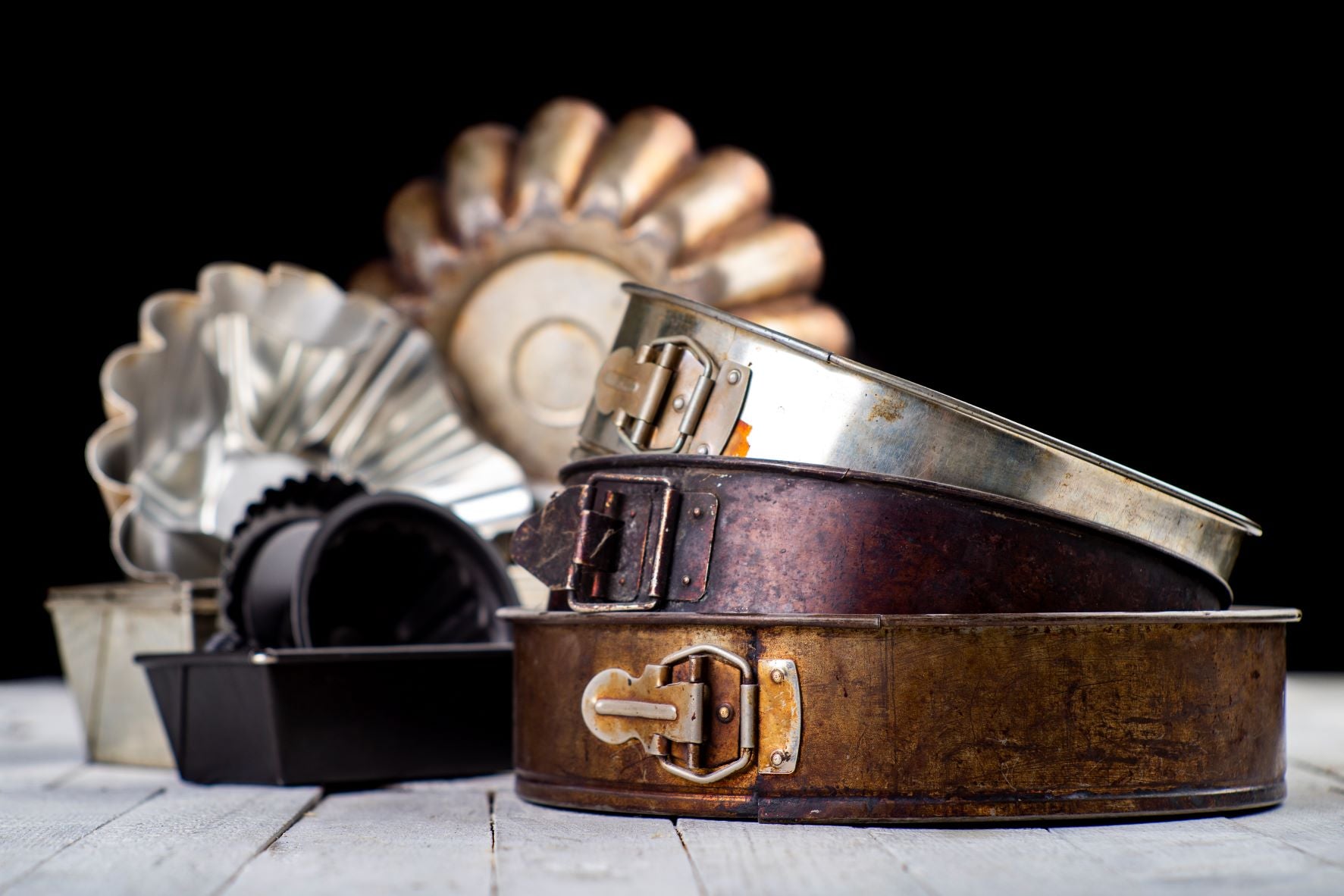
All those pans you put into the oven: What’s the difference?
Whether you’re building your bakeware collection fresh or need to replace some things, sometimes knowing exactly what you need can be confusing. If you live in a smaller dwelling, building a bakeware collection based on items that play several roles can be a space-saver. In turn, having the right pan for the job can be a time-saver.
So do you really need a whole bunch of different flat-ish pans to make a meal or a few batches of cookies? We did the research so you know what should take up valuable real estate in your kitchen.

Baking Sheet/Sheet Pan
One of the most multi-functional pieces of bakeware is a baking sheet. But, to be frank, a baking sheet can also be used more for savory dishes than sweet. These kitchen workhorses can do anything from roast meats to create one-pan, multi-layered meals. A pan with a shallow rim, baking sheets have a rim around all four sides to keep juices and other liquids from being lost. Additionally, baking sheets also play nice with accessories like roasting and cooling racks.
The downside of a baking pans is that acidic foods can react to the metal. For a best practice, use parchment paper or a silicone liner on the baking pans when cooking such items.
A benefit to baking pans is that the category comes in several sizes and aluminum grades. Quarter sheet pans, half sheet pans, full sheet pans and even commercial sheet pans are available depending on your needs.
Materials used to manufacture baking sheets are just as versatile as the range of foods the product can make. Materials range from heavy-gauge professional aluminum and hard anodized bakeware to, as of late, silicone with reinforced rims.
Baking Pans
Now, this is where things get interesting. Different than baking sheets are baking pans. These pans come in an array of different materials- ceramic, stoneware, metal, glass and reinforced silicone- as well as shapes and sizes. The most common shapes are rectangle and square, while the most common size for a square pan is 8 x 8, while the most common size for a rectangular pan is 9 x 13. Baking pans, as opposed to sheets, are made with deeper and used to hold runny batters like brownies and cakes, as well as savory dishes that contain sauces or other foods like casseroles, lasagnas and cobblers.
Cookie Sheet
Cookie sheets differ from baking pans and jelly roll pans because of its bottom, as they are designed to be flat. This helps to ensure the cookies do not lose their shape. Traditional cookie sheets have small lips on either side for gripping and come in a variety of shapes, sizes, thicknesses, materials and finishes.
There are several kids of cookie sheets- an insulated cookie sheet; a non-stick cookie sheet and metal cookie sheets.
An insulted cookie sheet has a 1/2-inch lip around it and is should be used for making more delicate cookies, like shortbreads. These sheets are designed to help cookies to bake evenly and will eliminate crisp edges or bottoms. However, one thing to make note of: Insulated cookie sheets will alter baking times since they bake more slowly than metal cookie sheets.
Non-stick cookie sheets, which are usually darker in color, are used for cookies that should have a slight crunch or crispiness to them. Additionally, the non-stick properties should make for easy clean up.
Metal cookie sheets vary in makeup- some may be made from aluminum, while others are made from steel. Aluminum cookie sheets usually carry a lower price point than steel but conducts heat evenly and quickly. Steel cookie sheets can be more durable, but also heat up faster than aluminum and could cause a burned batch if not careful.
Jelly Roll Pans
A jelly roll pan has rolled edges inside of a lip and was created to make, well, sheet cakes for jelly rolls. The pans are also helpful for baking bar-type cookies. The sides of a jelly roll pan are usually one inch deep. But not to burst anyone’s bubble, a jelly roll pan is really just a smaller version of a baking sheet.
